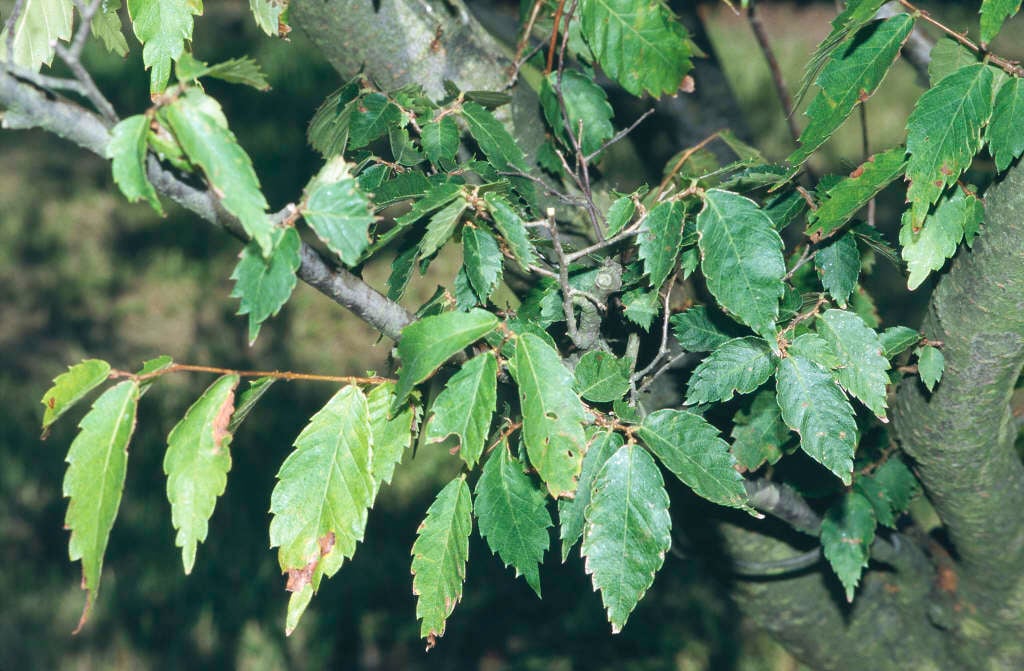Zelkova serrata
Japanese zelkova
A spreading, medium-sized deciduous tree with smooth grey bark and neatly toothed, lance-shaped leaves turning orange and yellow in autumn. Insignificant greenish flowers and fruits

Buy this plant
Size
Ultimate height
Higher than 12 metresTime to ultimate height
20–50 yearsUltimate spread
Wider than 8 metresGrowing conditions
Moisture
Moist but well–drained, Well–drainedpH
Acid, Alkaline, NeutralColour & scent
| Stem | Flower | Foliage | Fruit | |
| Spring | Grey Silver | Green | Green | |
|---|---|---|---|---|
| Summer | Grey Silver | Green | ||
| Autumn | Grey Silver | Orange Red Yellow | Green | |
| Winter | Grey Silver |
Position
- Full sun
- Partial shade
Aspect
South–facing or North–facing or West–facing or East–facing
Exposure
Sheltered Hardiness
H6Botanical details
- Family
- Ulmaceae
- Native to GB / Ireland
- No
- Foliage
- Deciduous
- Habit
- Spreading branched
- Genus
Zelkova are large deciduous trees or shrubs with neatly serrate, ovate leaves and inconspicuous flowers and fruit; good autumn colour
- Name status
Correct
- Plant range
- E Asia
How to grow
Cultivation
Grow in deep, fertile, moist soil and protect from cold drying winds
Propagation
Propagate by softwood cuttings from young plants in summer, grafting in winter. Propagate from seed (tree/shrub) sown outdoors in autumn
Suggested planting locations and garden types
- Low Maintenance
Pruning
Pests
Generally pest-free
Diseases
May be susceptible to Dutch elm disease and honey fungus (rarely)
Get involved
The Royal Horticultural Society is the UK’s leading gardening charity. We aim to enrich everyone’s life through plants, and make the UK a greener and more beautiful place.